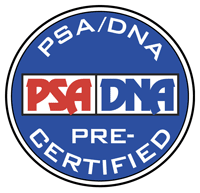AMS in French, signed “J. Ensor,” one page both sides, 8 x 11, no date. Handwritten essay by Ensor with excellent artistic content, entitled “La gravure une et indivisible [Engraving one and indivisible].” In full (translated): "Submit your plate to the printmaker hundreds of times. Polish it and polish it again unceasingly. Here are my barbed lines to salute our printmakers. Beautiful art of engraving sublimate of mystery, art with intense alchemy, alembics and retorts, diabolic art, reminiscent of Sulphur and bright silver, art served by strong acids, art fed by effervescent salts, art of immaterial essences, caustic, metallic, anti-academic art, unique art for brave at heart gentlemen with kindled sense and mind. And I mention Jacques Callot, your king and noble character. And you, Francisco Goya, brave and bold. And you, great humorists from England charging in spite of everyone and our printmakers from Belgium and the forthcoming ones from France and the ones from countries where bells ring, where darts and swords vibrate. And you above all our mordant and generous Rops you loved giving arms to your adversaries. The sharp tip of a good printmaker is related to the fencer’s foils, to the poet’s tapered pen, to the screech’s owl, to lightning zig-zags, to the panther’s fangs, to the mirror-maker’s diamond, and from one thing to another, to the rapid back-and-forth motion of our mothers’ needle, to the Virgin’s floating thread, to the small eye of the needle narrowed by our sisters. Noble tips, bladed weapon [white] or tawny ran with continuous-flow of blue acid, spiritual tips how far removed from sharp brushes, palettes smeared with rancid oil and foul, viscous materials common to painters of largest pieces. Alas, alas, alas!! Printmakers in the wrong fail in their duty, betray the fine profession, their thick lines such as cables filled with heavy ink, their coppers drowned, smoky by sticky tar, greased clouded, soiled, over scrubbed by rough cloth or scuffed by rags has no appeal. Gross maneuvers, messy anti voluptuous curling up the finest lines, manipulating with no respect the line-engraving, the softest vellum. Shut off your stoves! Spill your cuvettes! Money-grabbers, tinmen hovering blindly, state workers, vague beneficiary obsessed by illusive gains, imbalanced wading plumbers, deep in mud, plunged in mash. Honors to sight and smell, good taste, and touch. And to sum up lets love engraving pure and virgin, engraving curator of our painter’s masterpieces, our loved father’s and master’s engraving, honest engraving, clear and neat, one and indivisible.” In fine condition, with vertical and horizontal folds (the vertical fold passing between the first initial and last name in the signature), and faint brushing to a few lines of text on the reverse (not affecting legibility).
In this remarkable essay Ensor thoughtfully observes the craft of engraving and all of its aspects, touching upon the history, process, and aesthetic of the classic printmaking technique. After opening with a dramatic description of the method, Ensor acknowledges his forebears Callot and Goya. The influential Callot, a baroque printmaker of the 17th century, produced hundreds upon hundreds of etchings and developed tools and techniques used for centuries thereafter. The well-known Goya advanced the art even further as the last of the Old Masters, paving the way for more experimental printmakers such as Ensor’s fellow Belgian, Felicien Rops. Ensor utilized the medium to produce prints of the utmost detail using the finest lines, and he praises the “sharp tip of a good printmaker” while denigrating the poor quality and sloppy work of some of his contemporaries who sacrificed the essence of the art for the sake of money. This wonderful piece exemplifies Ensor’s artistic ideals, and it appears that the essay was published by Editions Dynamo in 1949 with a foreword by Max Elskamp. Pre-certified PSA/DNA.

This item is Pre-Certified by PSA/DNA
Buy a third-party letter of authenticity for
$75.00
*This item has been pre-certified by a trusted third-party authentication service, and by placing a bid on this item, you agree to accept the opinion of this authentication service. If you wish to have an opinion rendered by a different authenticator of your choosing, you must do so prior to your placing of any bid. RR Auction is not responsible for differing opinions submitted 30 days after the date of the sale.
We use cookies on this site to improve your experience. By using this site, you accept our use of cookies. To learn more, please see our Privacy Policy.